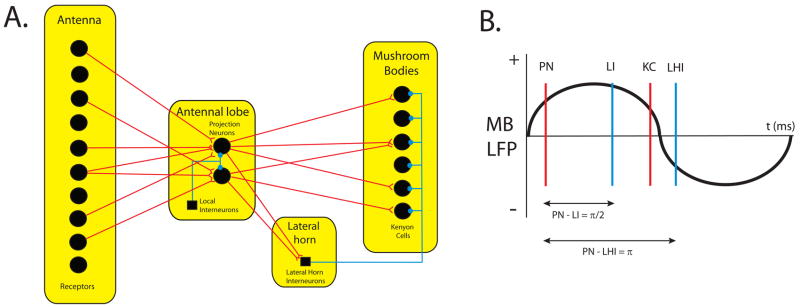Figure 1.
Anatomy of the insect olfactory system promotes oscillatory synchrony. (A) Anatomy of the insect olfactory system. 90,000 olfactory receptors in the antenna project to 830 projection neurons in the antennal lobe. The projection neurons are heavily interconnected by about 300 local interneurons also in the antennal lobe. The projection neurons project to 50,000 Kenyon cells in the mushroom body. The projection neurons also send collaterals to 80 lateral horn interneurons in the insect lateral horn, which in turn, also send projections to the Kenyon cells. (B) Relationship of each cell type’s spike timing relative to a mushroom body local field potential (LFP). The recurrent inhibition of the insect olfactory system generates very precise oscillatory spikes in each cell type. Local interneuron spikes in the antennal lobe lag projection neuron spikes by one quarter of an oscillatory cycle, prolonging projection neuron hyperpolarization. Inhibitory lateral horn interneuron spikes onto Kenyon cells lag the stimulatory projection neuron spikes onto Kenyon cells by half an oscillatory cycle. Both these mechanisms serve to increase the precision of oscillatory spike synchrony. See text for details.

